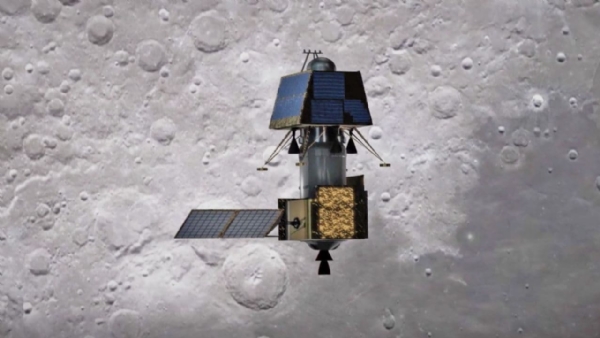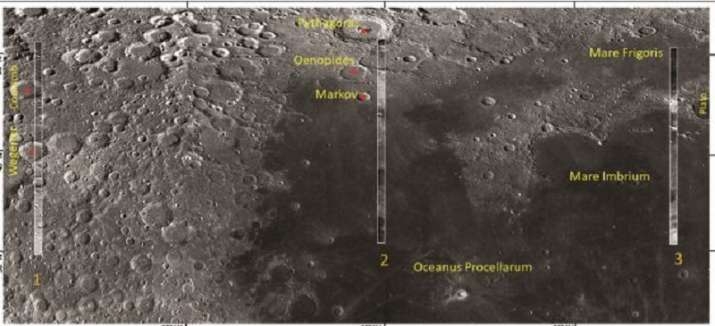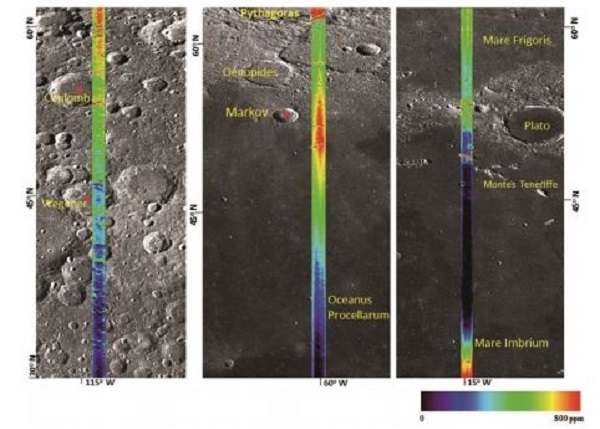Stunning discovery! ISRO discovers hydroxyl and water molecules on lunar surface
Total Views |
New Delhi, August 12: Achieving the new benchmark, the Indian Space Research Organisation's lunar spacecraft Chandrayaan II has made a path-breaking discovery that provides important inputs regarding the presence of water on the lunar surface.

According to a research paper published in Current Science Journal, Chandrayaan II, using its Imaging infrared spectrometer (IIRS) instrument has discovered the presence of hydroxyl as well as water molecules on the lunar surface. The spacecraft with the help of an Imaging infrared spectrometer (IIRS) could differentiate between hydroxyl and water molecules.
"The initial data analysis from IIRS demonstrates the presence of widespread lunar hydration and unambiguous detection of OH and H2O signatures on the Moon between 29 degrees north and 62 degrees north latitude," researchers said.

This is the first for IIRS capabilities on India’s second lunar mission that can operate in the wavelength of 0.8 to 5 micrometer, the relatively broader range within which the indigenous instrument for water detection can image.
The IIRS is specifically designed to measure the reflected solar radiations and thermal emissions from the lunar surface. It was developed by the Space Applications Centre (SAC) of ISRO, which is based in Ahmedabad, to collect information critical for understanding the mineral composition of the lunar surface.
It was also observed from the data that the brighter sunlit highland regions at higher latitudes of the Moon were found to have higher hydroxyl or possibly water molecules. Scientists at the Indian Institute of Remote Sensing (IIRS) in Dehradun opine that the formation of hydroxyl and water on the Moon is due to space weathering, a process of interaction of solar winds with the lunar surface. This combined with impact events led to chemical changes that further triggered the formation of reactive hydroxyl molecules.
This spectral analysis will provide new inputs about the geology and geophysics of the Moon’s mantle in terms of their mineralogy, chemical composition, and solar-wind interaction.
This is a major discovery and it could also have significant repercussions for future planetary exploration and resource utilisation. Chandrayaan-2 is ISRO’s second mission to the Moon, which was launched on July 22, 2019, from the Satish Dhawan Space Centre, Sriharikota.

It should be noted that it was India that discovered water on the Moon's surface. India’s maiden lunar mission, Chandrayaan-1 first detected water molecules and hydroxyl at several locations of the sunlit region of the moon’s surface.
The new findings were done by a team of scientists from IIRS Dehradun that included Prakash Chauhan, Mamta Chauhan, Prabhakar Verma, and Supriya Sharma, along with Satadru Bhattacharya, Aditya Kumar Dagar, Amitabh, Abhishek N. Patil, Ajay Kumar Parashar, Ankush Kumar, Nilesh Desai from Space Applications Centre and Ritu Karidhal from URRSC Bengaluru and AS Kiran Kumar from ISRO.